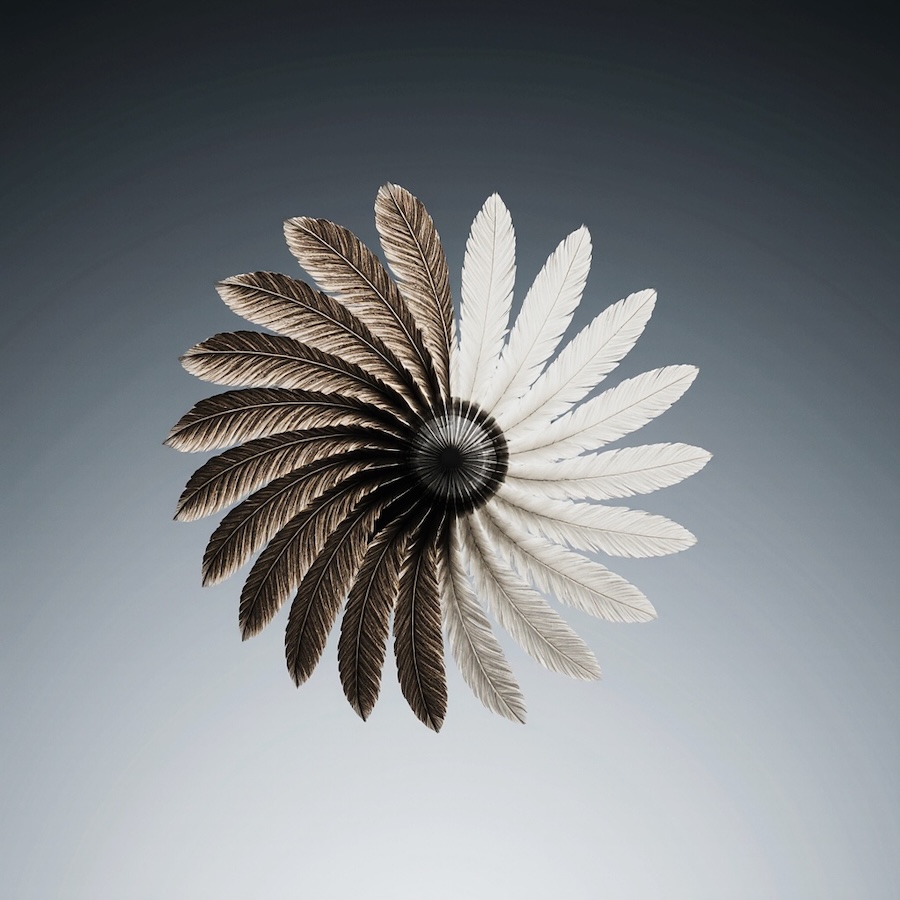
A recent research introduces a biomimetic stator vane design inspired by bird feathers, which improves the aerodynamic performance of radial turbines in Organic Rankine Cycle systems, boosting power output and thermal efficiency for waste heat recovery applications.
In today’s energy-hungry world, industries waste enormous amounts of heat that simply vanish into thin air 🌫️. But what if we could capture that heat and turn it into clean, useful energy? That’s exactly where Organic Rankine Cycle (ORC) systems come in, helping convert low-temperature waste heat into power 🔋.
Now, engineers have found an even smarter way to make ORCs more efficient — by taking inspiration from nature! This recent study by researchers from the University of Hail introduces a biomimetic stator vane design, mimicking the shape of bird feathers 🪶, to boost the efficiency of radial inflow turbines. Let’s dive into how copying a turkey feather can give us more power from waste heat.
Industries like manufacturing, power plants, and even large diesel engines generate tons of low-temperature waste heat. ORC systems capture this heat using special fluids and convert it into electricity. But there’s a catch: the turbine inside these systems — especially its stator vanes — plays a huge role in how much energy can actually be harvested.
In standard designs, these stator vanes are flat or symmetric. That’s simple and cheap, but not very efficient when operating at high pressure or non-ideal conditions. Nature, on the other hand, offers countless optimized shapes that manage fluid flow much better. 🌿
Have you ever wondered why birds like turkeys can suddenly take off and glide so efficiently? Their feathers are cambered, meaning they are curved rather than flat. This camber creates differences in pressure that allow the bird to generate more lift with less effort.
Researchers thought: why not try this with turbines? 🤔
By curving the stator vanes (instead of keeping them flat), you can guide the flow more efficiently through the turbine, increasing energy transfer and reducing losses. This is a perfect example of biomimetics, where engineers solve modern problems by copying nature’s solutions.
The research team built a digital model of a radial inflow turbine, the most common turbine type in ORC systems. Their goal: compare traditional flat vanes with nature-inspired curved (cambered) vanes.
Here’s what they did:
✅ Used a typical waste heat source from a 10-liter diesel engine.
✅ Ran simulations using R245fa, a common ORC working fluid.
✅ Focused only on changing the vane shape, keeping everything else constant.
✅ Compared power output, efficiency, flow behavior, and energy transfer.
By keeping it simple, they could pinpoint the direct effect of biomimetic vane design.
In fluid dynamics, camber increases the turning angle of the flow:
But it’s not just about “more curve = better.” The team found that moderate camber (around 10%) worked best. More than that caused flow separation and instability, reducing performance.
They hit the “sweet spot” that balances:
✅ High energy extraction 💥
✅ Stable flow 🌊
✅ Manageable manufacturing complexity 🛠️
The key takeaway? Smart tweaks to geometry lead to noticeable performance gains without overcomplicating the turbine.
👉 Efficiency gains are like free energy: no extra fuel, no extra cost, just better design.
👉 Small improvements add up, especially in industries running ORC systems 24/7.
👉 Less wasted heat = less environmental impact 🌱.
This approach is scalable, meaning it could work for:
It’s cost-effective, too, because it changes only one part — no need to overhaul the entire system.
The study focused on 1D simulations for quick and insightful analysis. But the researchers are planning:
✅ CFD (Computational Fluid Dynamics) studies for more detailed flow analysis.
✅ Structural analysis to ensure the new vanes stay strong under real-world conditions.
✅ Prototyping and testing in physical turbines.
If successful, this biomimetic approach could set a new standard for radial turbine design, especially for sustainable energy applications. 🌎
This study is a fantastic reminder for engineers:
Sometimes, the smartest solutions have already been perfected in nature. 🦅
Whether you’re designing energy systems, mechanical components, or aerodynamic structures, don’t forget to look to the natural world. Biomimicry isn’t just a trend — it’s a powerful tool for smarter, cleaner, and more efficient engineering. 💡
✅ Biomimetic vanes inspired by bird feathers increase ORC turbine efficiency
✅ +6 kW power gain, +1.34% cycle efficiency improvement
✅ Best camber ~10%, smooths flow and boosts energy transfer
✅ Simple design upgrade = Big impact
✅ Promising future for sustainable energy systems
Organic Rankine Cycle (ORC) ♻️ A power generation system that converts low-temperature heat (like industrial waste heat) into electricity using special “organic” fluids with low boiling points.
Radial Inflow Turbine 🌀 A compact turbine where the working fluid flows inward in a circular (radial) path, spinning the turbine to produce power — perfect for small energy systems!
Stator Vane 🛞 Fixed blades inside a turbine that guide and control the flow of fluid before it hits the spinning blades (rotor), affecting how efficiently the turbine runs.
Camber 🏎️ A curve or bend in a blade (or wing), designed to make fluid flow smoother and faster, increasing efficiency — like how bird wings are curved for better lift.
Biomimetics (Bio-Inspired Design) 🌿 The science of copying clever designs from nature (like feathers, fins, or leaves) to solve modern engineering problems more efficiently. - More about this concept in the article "Bio-Inspired Engineering: Transforming Reinforced Concrete Protection with Honeycomb Structures 🐝"
Waste Heat Recovery 🔥♻️ The process of capturing leftover heat from machines or industrial processes and turning it into useful energy instead of letting it go to waste.
Thermal Efficiency ⚡ A measure of how well a system converts heat into useful power — higher efficiency means less waste and more energy!
Source: Alshammari, F.; Alatawi, I.; Alhadri, M. Biomimetic Stator Vane Design for Radial Turbines in Waste Heat Recovery Applications. Biomimetics 2025, 10, 463. https://doi.org/10.3390/biomimetics10070463
From: University of Hail.